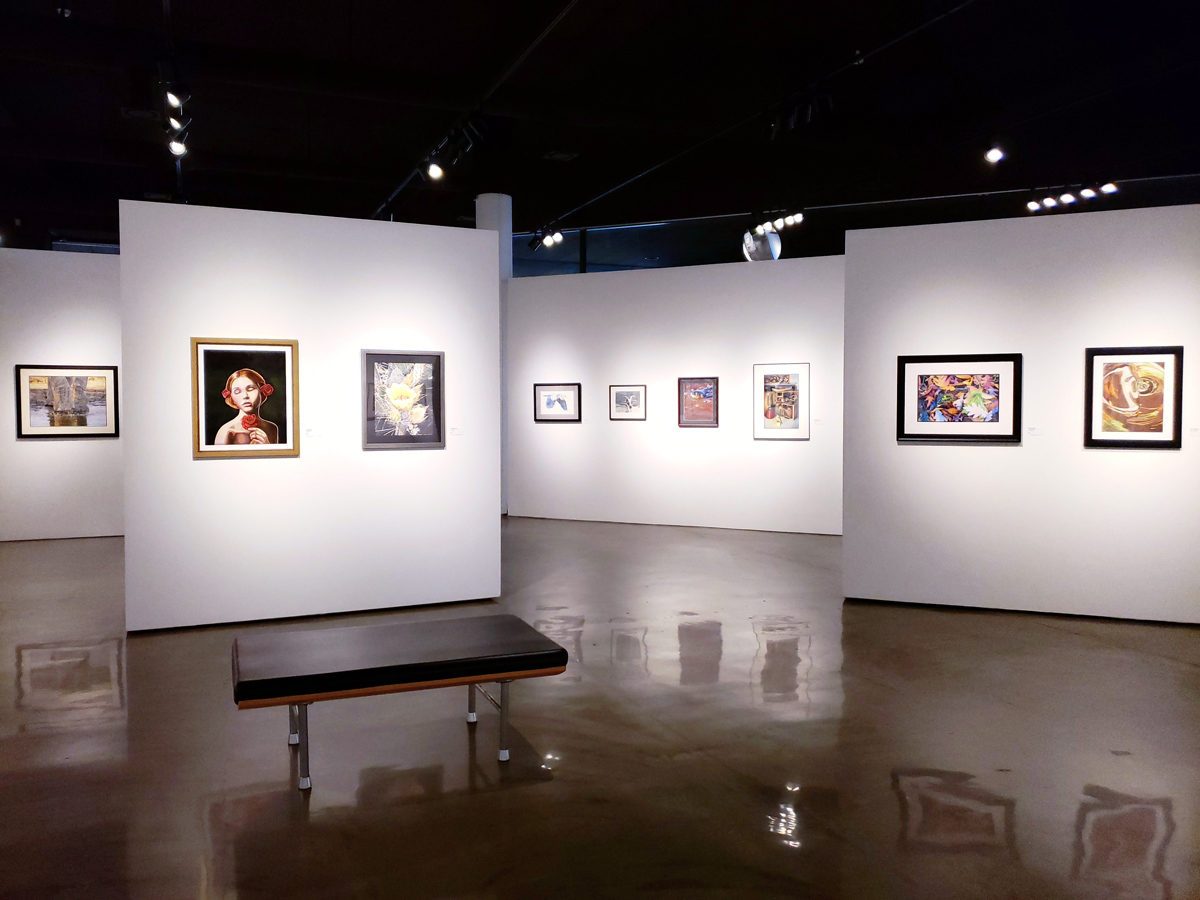
The Colored Pencil Society of America (CPSA) is a nonprofit enthusiastic enough about art created with colored pencils that it’s working to get you to take it seriously, too. While the name evokes images of children biting their lip while coloring worksheets, the exhibition at Brea Gallery is far too impressive for thoughtless wisecracks. Juried by Jean Stern, executive director of the Irvine Museum Collection at UC Irvine, the 118 framed drawings are all high-quality, subject to fairly rigorous standards of lightfastness (how long color lasts after being exposed to UV), as well as fairly strict regulations about what can be used as source material.
CPSA’s rules demand that the image must be the artist’s own pictures, but I’m not sure how closely those dictates are complied with or how the work is vetted; a quick Google search revealed at least one award-winning picture was based on a photo that was not taken by the artist. But the larger issue for me is that the more a work on display resembles a photograph—and there is a lot of it here—the more likely it’s by someone using something akin to a camera obscura, a device that allows artists to trace a projected image.
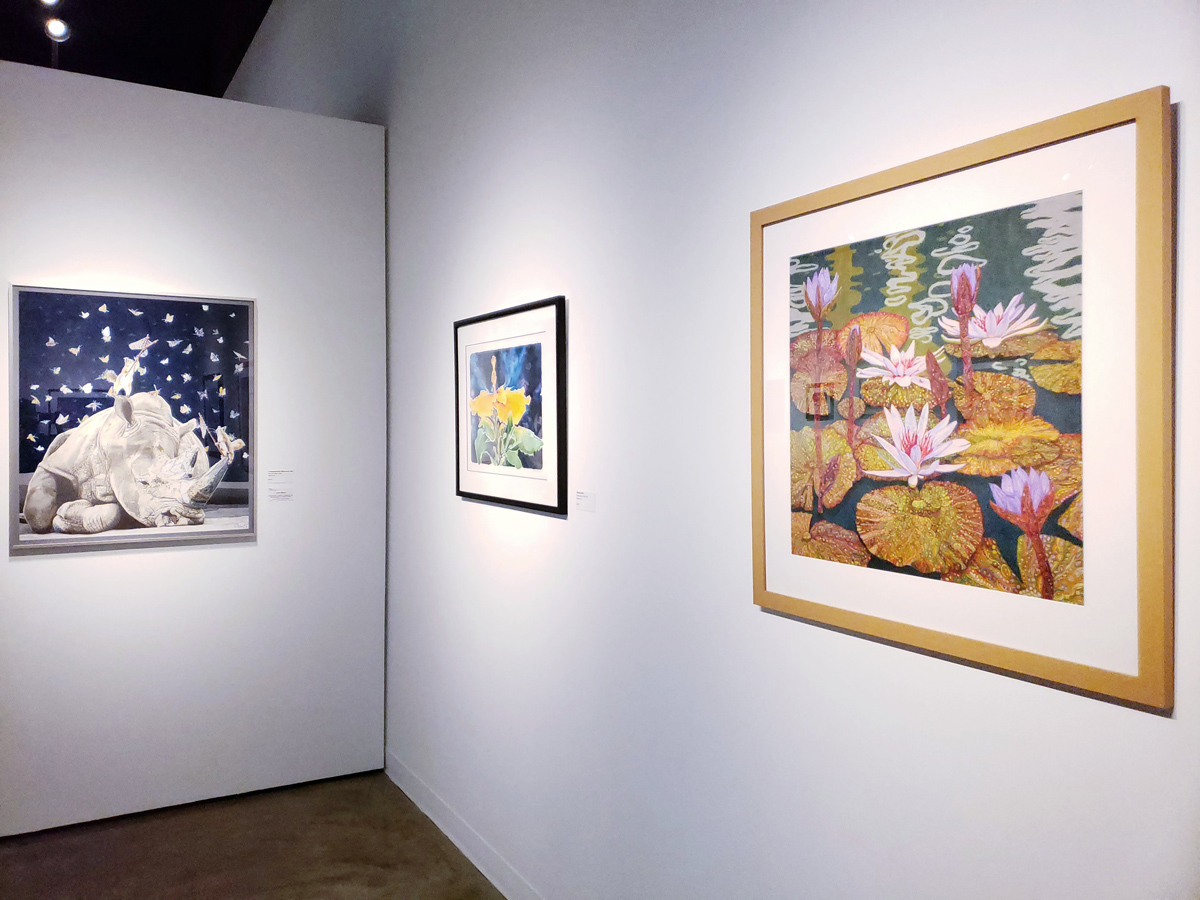
Using a drawing tool that allows tracing makes the resultant art second-tier, despite its use by greats such as da Vinci, Caravaggio, Vermeer and Warhol (who sometimes used a slide projector). If you’re copying an image instead of using your imagination and skill, then how is it really your art? Yes, you may need to understand tone and value, may have colored the final image, which required some talent to do so even somewhat realistically. That last item, unfortunately, raises the question: Why not just take a photograph and stick it in the frame? It’s a better representation of captured life than your drawing will ever manage.
While it may not take the 10,000 hours bandied about by journalist Malcolm Gladwell to master something, drawing and painting takes time. It’s hard work. I can appreciate someone tracing at the beginning, getting the feel of the pencil in hand, as well as for the real-world experience of seeing just how much time it takes, but artists who don’t want to make the sacrifice or do the work required to be good aren’t really worth our attention.
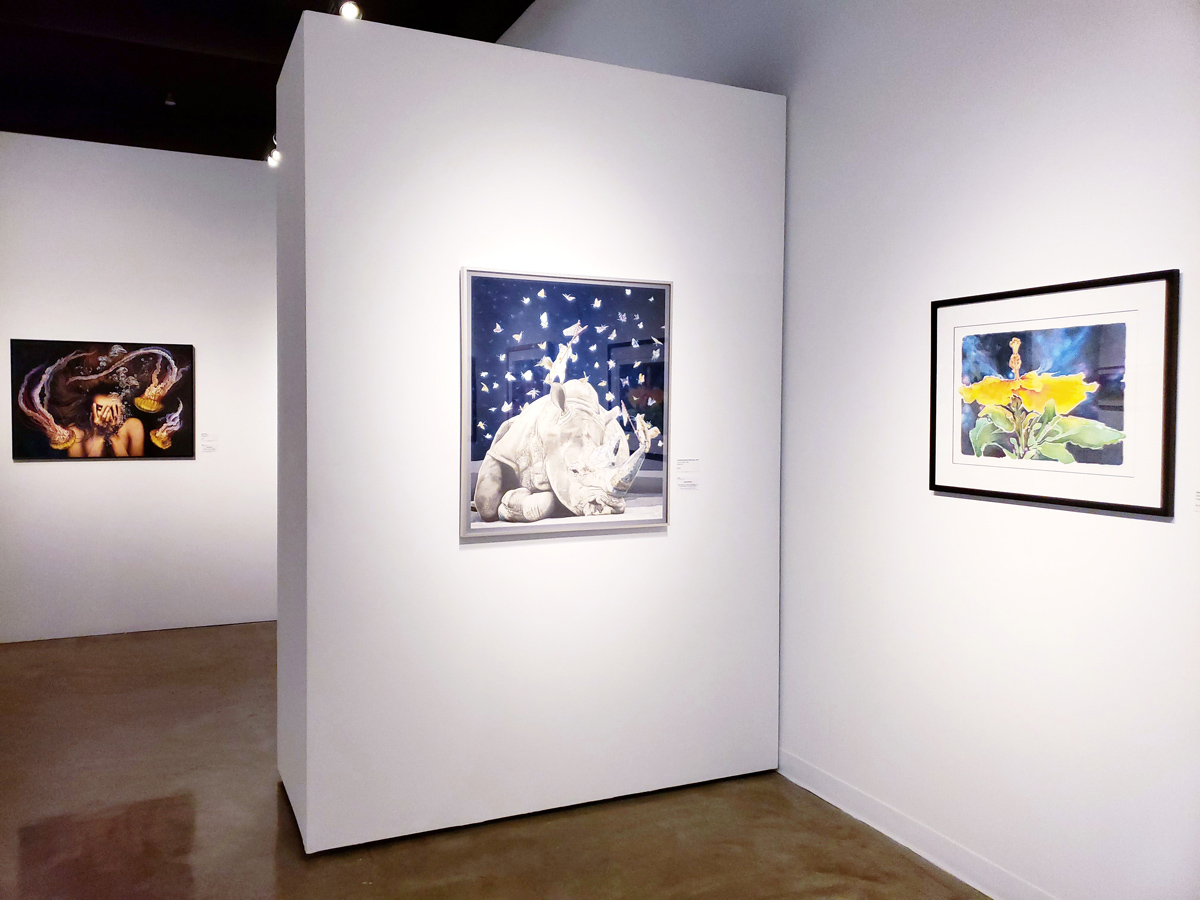
I have avoided any specific mention of what I suspect may be traced—and there appears to be a lot of it—no matter the other skills that have been used to bring the picture to life. That eliminates much of what’s on display, to be frank, though I don’t intend to point a finger at anyone in particular. In part, that’s because there aren’t any curation notes, but also because I’m not particularly interested in shaming anyone.
The ironic Prosperity by Richard Huck is a drawing of a cardboard building, water tower and flattened mountain landscape, an obtrusive oil pipeline snaking through the middle of it. All different shades of brown and gray, it reads more like a graveyard. Devoid of people, the artificial Magritte clouds amid blue sky and the smattering of green grass at the bottom of the frame are the only things still living. Jennifer Leon’s Tea Time transports the viewer back to childhood, with its plush frog and bunny sitting around a tea pot while a small white mouse nibbles at a checkerboard petit four. Her expert ability to create texture in the background breaks up that corner via cross-hatch shading, while its darkness makes the colors of a nearby throw pillow pop. The clever Deconstructing Oz by Jeffrey Baisden demands enough familiarity with the story that you can see all of the different characters suggested by the still-life: an oil can, a tin bucket, a small red heart, straw, two books and a pair of work shoes. Jody Beighley’s Main Street, Saturday Morning has the quaintness and green foliage of an unhurried thoroughfare, its slightly blurred focus the Vaseline lens of nostalgia. I was fully immersed in Linda Lucas Hardy’s The Substance of Things Hoped For, its purple-blue grapes on leafy vines rich in saturated Maxfield Parrish color. Deborah Maklowski’s After the Storm is a wooden dock leading to green water, the shore opposite; the sun rising in the sky over still, peaceful water creates a picture-perfect example of a landscape that captures more than just a pretty picture.
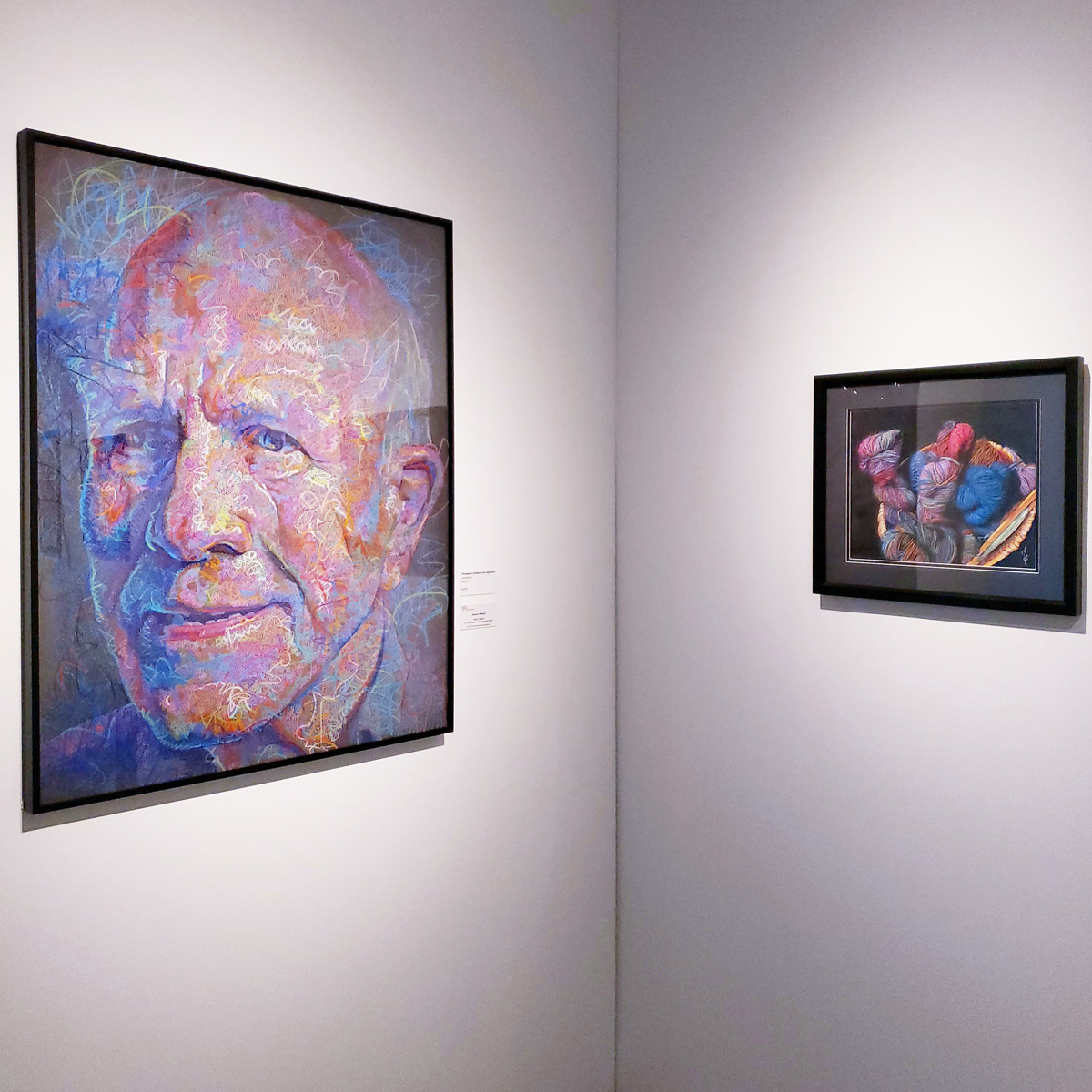
For the future, the process of work such as this needs to be demystified. Art historians and critics, including myself, usually do little to shed light on how work is created, focusing mostly on the materials used or the feelings we have when looking at it. Focusing solely on the ideas is a primarily selfish, insular thing satisfying only the person writing about it, when opening up the hard work, the blood, sweat and tears behind the art should be our goal.
“Colored Pencil Society of America 27th Annual International Exhibition” at Brea Gallery, 1 Civic Center Circle, Ste. 1, Brea, (714) 990-7730; www.breagallery.com. Instagram: @breagallery. Open Wed.-Sun., noon-5 p.m. Through Sept. 13. $3.
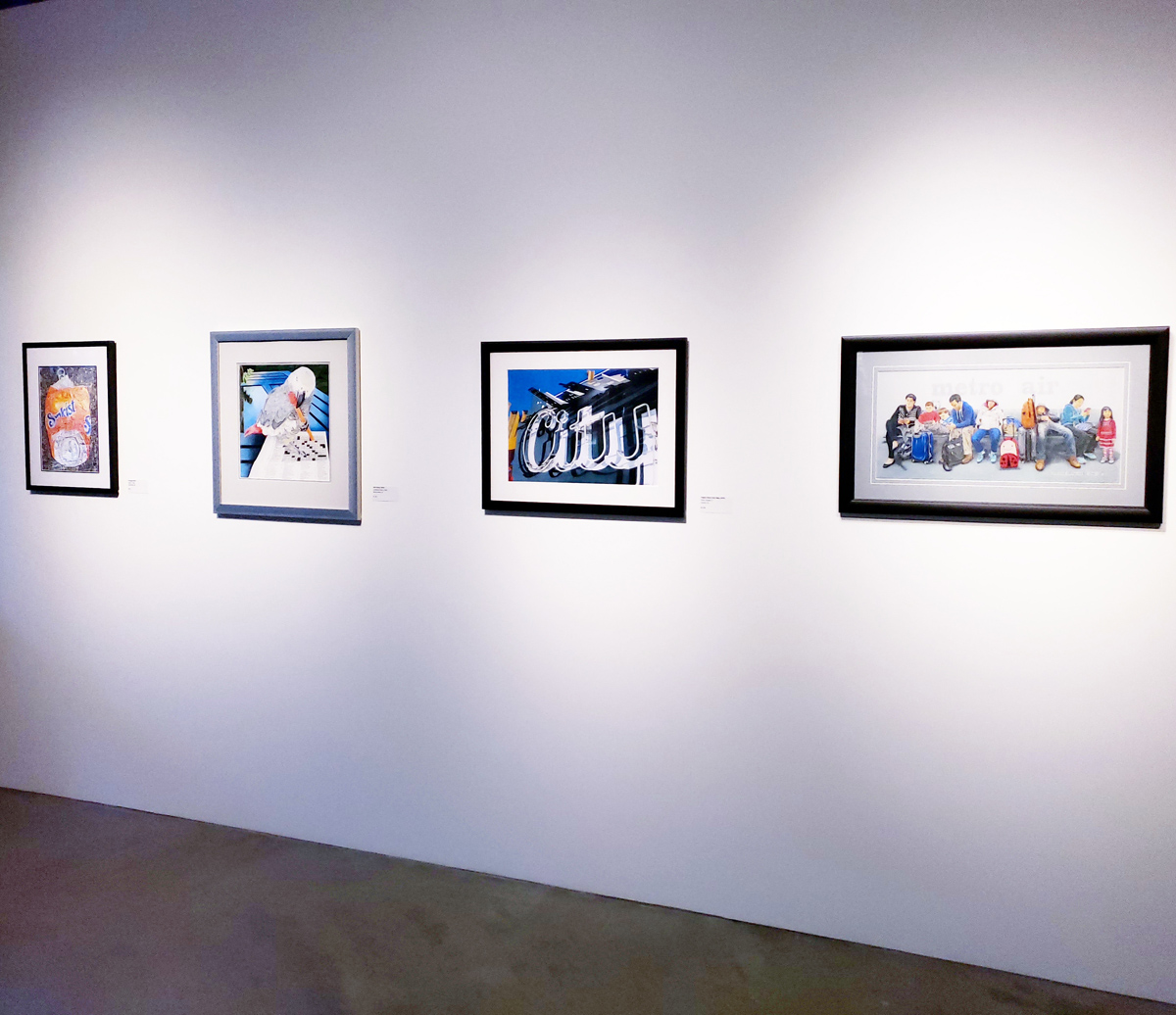
Dave Barton has written for the OC Weekly for over twenty years, the last eight as their lead art critic. He has interviewed artists from punk rock photographer Edward Colver to monologist Mike Daisey, playwright Joe Penhall to culture jammer Ron English.


awesome!
thanks for sharing!
Well said. In response to your comment regarding demystification, note that the process of creating works with colored pencil takes, on average, far more time than traditional media and thus photographic references are frequently employed. However, I think most colored pencil artists would agree that there is a difference between showing off technical competency through a direct copy and completing a work of art. Your review adds fuel to the ongoing community debate regarding the place of ultra-realism in art, which is an entirely different topic .
I REALLY appreciate this. I am an attixddt (B?W pphotography, Encauxstics, watercolor) who is just getting entangled with color pencil. I is a fascinating medium with tremendous possibilities. Quite exciting in fact.
I have been looking at a lot of color pencil work and have the same thoughts and concerns as this writer. I KNOW that ifyou use a photographic image for reference that is not yours, then the ensuing art is not yours. Period.
Fine art that is respected and acknowleged, is fine art by MORE than technique. Unfortunately the practitioners I see in action on forums are very strong on technique and very weak on art.
You do know most of those forums are targeted towards beginners,right? And if you are believing what this pretentious little troll is saying, then you may want to rethink colored pencil, because he has posted absolute nonsense. Because I have done “real” art, according to yours & Dave’s standards in watercolor, oil, & pastel, & let me tell you in terms of the number of techniques & concepts you need to learn, colored pencil has been hands down the hardest to master technically.
You are a pretentious twit. Any REAL artist will tell you that MOST ARTISTS TRACE OR PROJECT if they’re using a reference photo, & the idea that it’s okay for the masters to do it but not modern artists is absolute nonsense.
I shudder to think what your art might look like. Because I’m betting you’re worse at that than you are as a critic.
Sit down.
Wow. Dave, you have gotten some bad information about colored pencils. And art in general too, really. If you think artists in all mediums don’t trace or project, you’re in denial.
I’ve created “real” art according to your dubious definition in watercolor, pastels, oil, & charcoal, & I can tell you right now learning the technical aspects of colored pencil was the hardest of them all, Yes, even watercolor.
This is what happens when someone does a review of something that he doesn’t know anything about.
Mr Barton,
You should be ashamed of yourself, given the ignorant nonsense you’ve written here about this medium, these artists, and art in general, frankly. Did you interview a single artist, or even leaf through a copy of “Colored Pencil” magazine? Your level of ignorance is astounding.
As a critic you should have an open mind. You showed your ignorance with your comments. That show is Amazing!
“if the name evokes images of children biting their lip while coloring worksheets” to you then you have no business reviewing this show. Your writing displays no understanding or respect for the medium. Your review was juvenile and unprofessional. There is a lot of art and art mediums I don’t like but I respect the effort and art style nonetheless. If I were you, I wouldn’t put this piece in my writing portfolio. Editors will not take well to it.
The idea of employing an art critic is to bring more knowledge of an art form to the table than the average reader.
Making a virtue of ignorance is not a good look. The OC Weekly should do better.
Ignorance. Generalized statements. I’ve seen plenty of other “professional” artists, in other mediums, using different methods to “trace” or map their starting point too. (Grid method, projector, tracing) The rest is completely their abilities. Colored Pencils though require multiple layers making them different from say a watercolor painting, and that “traced base” is long LONG gone when you are seeing the final product.
It’s unfortunate that you felt compelled to spend the majority of your writing
bashing the colored pencil medium and flinging accusations of artists cheating or
not having the talent of “real artists”. You should have just re-positioned
your last paragraph to the first, as an admission of your ignorance of the
medium and obvious bias in your reporting – as you put it, “primarily selfish and
insular” approach to this piece – for your own “personal satisfaction”.
Next time, do your homework like a good journalist would and know your topic.
Your insinuation that the CPSA is lax in their vetting process for their juried International, Regional and local exhibits is quite misleading. They are, in fact, quite diligent and stringent about correct medium requirements and reference materials allowed, even to the point of contacting artists for confirmation of personal photos used in their work. You might have checked with CPSA first with any questions, especially of implied improprieties, before maligning any of the artists represented for not meeting your standards. I would say the level of artwork that flows from the pencils of the members of CPSA are exceptional in every regard.
I trace and project as well as work freehand or out of my head. It all depends on what I’m into or working with. However, a paining that looks like a photograph is a failure in my work. My reputation is that I put much more into it, especially emotionally. As long as I’ve been drawing, I’ve been making works that people like. I’ve come to rely upon it. Yes, tight detailed and photographic is impressive, but it doesn’t stop there.
What a disrespectful, uneducated review! A critique should be based on a well researched topic and Art is so subjective. Colored pencil is one of the more difficult mediums to master. You don’t have to like and admire all art forms, but as an Art critique you should be respectful of all forms of it and Artists. Very disappointing to see such mediocre article published.
I am trying to purchase the November 2021 issue of TO THE POINT by Colored Pencil Society of America but their website doesn’t exist anymore. Any idea of how I can get a hold of them to buy a past issue?